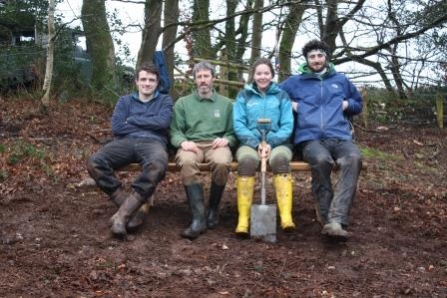Clayhidon Turbary nature reserve
Clayhidon Turbary
Location
Know before you go
Dogs
When to visit
Opening times
All year roundBest time to visit
May to OctoberAbout the reserve
Clayhidon Turbary's thirteen hectares are made up of heathland, scrub and young woodland. It can be very boggy in parts, but for those willing to make the effort, it's a place rich in natural and local history.
Ash dieback
The disease ash dieback is now widespread in the UK and is present at many of our nature reserves, so we carry out tree felling across our sites in winter months. For your own safety please observe temporary path diversions and closures.
Where possible we will leave affected ash trees in place to decay naturally as an important habitat for wildlife. We plan to only fell diseased ash trees which pose a threat to people or infrastructure. Before trees are felled, we will check whether any rare or protected wildlife is present. If it is, we will postpone or avoid felling these trees. No felling will take place during the bird nesting season.
DWT’s Saving Devon’s Treescapes project are working with communities, landowners and businesses to help make Devon's precious treescapes more resilient in the face of ash dieback. Find out how you can get involved here.
NOTICE: If you are visiting our reserves, please note that there have been instances of H5N1 Avian bird flu found in birds in Devon. There is very low risk to public health, but we do ask that if you come across any unusual or unexplained bird deaths on or near our reserves, please do not touch them and avoid allowing your dog to come into contact with dead birds. Please report them to Defra here or call 03459 335577 and also report your findings to DWT by email at contactus@devonwildlifetrust.org.
Contact us
Environmental designation
Location map

Support from Biffa Award has allowed us to add a new bench to this reserve.
What 'Turbary' means
Clayhidon Turbary was once used by local people who grazed their cattle there and who also cut peat from the site to use as fuel to heat their homes. This ancient right is at the root of the name 'Turbary'.
In recent years these uses declined and the heathland had begun to lose its special character. However, in 2011 Devon Wildlife Trust stepped in to take on the management of Clayhidon Turbury and made it a nature reserve.
In the years since, the charity has been using its experience gained at other nearby Blackdown Hills nature reserves to restore the site to former glories. A major breakthrough came when the charity gained more than £35,000 of support for the nature reserve from Biffa Award - a multi-million pound fund which awards grants to community and environmental projects across the UK.
Slow worm at Clayhidon Turbary
Thanks to this support the nature reserve now has stock-proof fencing around the site to keep ponies and cattle in. The grazing of these animals plays a critical role in opening up the reserve, allowing wildflowers and insects to flourish once more.
Today Clayhidon is well on the way to recovery. Make a day of exploring the wildlife and wild places of the Blackdown Hills by also visiting Devon Wildlife Trust's Lickham Common and Ashculm Turbary nature reserves.
Bringing grazing back to Clayhidon
Watch this short video to explore the work that Devon Wildlife Trust is doing at this reserve with the help of support from Biffa Award.

Biffa Award
Conservation work at this nature reserve has been supported by Biffa Award.


